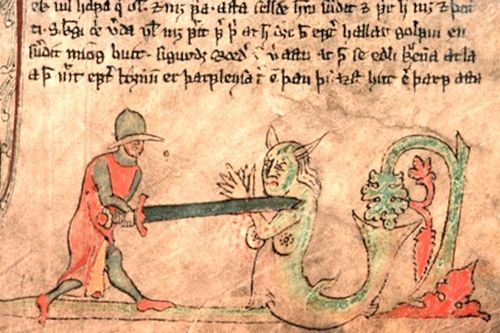Icleandanic Sagas, The Role of the Dead and the Life of Landscape
Here are two really fascinating and remarkable takes on the traditions of the Icelandic Sagas. The first is a short, documentary film created by (then graduate student, now a professor) Emily Lethbridge, at Cambridge University, revealing the relationship between the landscape, as the context and texture of the ��slendingas��gur, the sagas of Iceland. It's a beautiful and chilly film, but it demonstrates how people living in those locations of the sagas still talk about the events as if they occurred yesterday. And those startling and stark views of the land -- just remarkable.
And for another take on the Medieval sagas, here is a terrifc paper I came across that I really enjoyed reading : The Role of the Dead in Medieval Iceland: A Case Study of the Erybyggja Saga, by Kirsi Kenerva. It's an interesting study on the presence of the undead who appear with the seeming purpose to commit violence against the living-- but whose acts function to uncover social wrongs in the community that must be corrected. The restless dead take a variety of shapes, including a really creepy disembodied seal head that rises from the floor boards and devours the cache of dried fish in the storeroom. The hero is at the center of the social upset -- a bastard son with no father -- he can only move through a rite of passage to adulthood, if he can confront the dead, and use the law ( and what a strange trial it is) to address the grievances. I was unaware of the connections between the Icelanders and the Irish -- who also figure in this tale. A reminder to me of all the traveling between of these sea going people -- bound together by the Vikings.
Here's the abstract:
"The article concerns the ghost story of Eyrbyggja saga, the so-called ���wonders of Fr��������� (Fr������rundr), and examines the symbolic meanings of this episode as they were interpreted in medieval Iceland. The analysis presupposes that, although the restless dead could be understood as ���real��� by medieval readers and as part of their social reality, the heterogenic nature of the audience and the learning of the writers of the sagas made possible various interpretations of the ghost-scene, both literal and symbolic. It is argued that the living dead in Eyrbyggja saga act as agents of order, whose restlessness is connected to past deeds of those still living that have caused social disequilibrium. In Fr������rundr these actions involve expressions of disapproved sexuality and birth of offspring with indeterminate social status. For the ghost-banisher the hauntings represent an opportunity to improve his own indeterminate status."
Midori Snyder's Blog
- Midori Snyder's profile
- 87 followers




